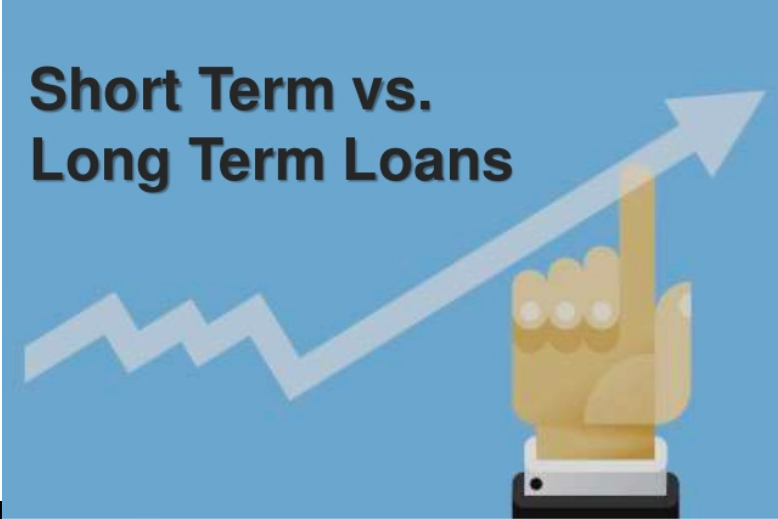
Term loans are borrowings from banks or lenders where the loan is for a fixed tenure and repayments are to be made over a period of time, through easy instalments. The loan can range from 30 days to 30 years as per the agreement between the borrower and lender. Term loan interest rates may be fixed or floating.
Based on the loan tenure, term loans can be categorized into short term and long-term loans. The final loan amount borrowed and how much interest is payable depends on whether it is a short term or long-term loan.
What are the differences between short term and long-term loans?
Here are some of the main differentiating factors between short term and long-term loans:
Loan amount
The loan amount is the main differentiating factor between long-term and short-term loans. The higher the loan amount, the longer the repayment tenure in the case of long-term loans. The lower the loan amount, the faster the repayments and therefore shorter the loan tenure in short-term loans.
Interest rates
Short-term loans often come with high interest rates. This is mainly to compensate for the shorter repayment period. Short-term loans are generally provided without collateral and are therefore riskier for lenders in case the borrower does not pay back on time. Long-term loans may charge lower interest rates due to longer tenure and lower risk of non-payment.
Loan approval process
Borrowers tend to prefer short-term loans, like personal loans, as these offer immediate liquidity and cater to urgent financial needs. Thus, the approval process of short-term loans is often quick and easy. These loans also require minimal documentation. Long-term loans are generally approved after considering all the eligibility criteria and a thorough assessment of the creditworthiness of borrowers. Secured long-term business loan approvals also involve an assessment of the asset’s market value. Short-term loans can even be approved within 24 hours, which is not possible in the case of long-term loans.
Duration
Short-term loans come with a repayment tenure between 1 to 5 years. In case of long-term loans, the loan tenure may vary between 10 to 20 years. The longer repayment tenure, therefore, allows a business to distribute the repayment over a longer period.
Collaterals
Long term loans are provided for higher amounts and longer tenures, which means repayment continues for longer periods. The lenders, in this case, require collateral, i.e. security from borrowers of long-term loans. In case the borrower defaults, the lender can recover any outstanding dues from the sale proceeds of the collateralized asset. Short-term loans are generally unsecured and don’t involve collaterals. Some short-term loans may require an indirect form of collateral, like overdraft facilities secured against fixed deposits, invoice discounting, account receivable funding, etc.
Purpose of loan
Short-term loans cater to the working capital requirements or operational needs of businesses. Long-term loans, on the other hand, can be used by businesses to finance asset purchases or business expansion or to adopt a growth strategy. The income generated from assets or expansion or growth is generally earned over a longer period, thereby allowing the businesses to repay long-term loans in a phased manner.
Short-term loan vs. long-term loan differences in tabular form
The table below highlights the key differences between short term and long-term loans:
| Factors | Long-term loan | Short-term loan |
| Loan tenure | Tenures are usually beyond five years. Maximum tenure can go up to 30 years. | Tenure is usually five years or under. |
| Mortgage period | Most housing loans are secured long term loans. The collateralised property cannot be solely in the borrower’s name until full loan repayment. Asset is collateralised for a longer period. | Short term loans often do not require collateral. However, in case collateral is needed, the asset can be free of collateralisation in a short period. |
| Interest rate | Repayment of long term loans is spaced out over many years and therefore these charge lower interest rates. | Since short term loan tenures are shorter, lenders charge higher interest rates to compensate for the shorter repayment tenure. |
| EMI | The monthly EMI payments are lower in long term loans. | Since short-term loans need to be repaid within a smaller duration, the EMI amount is usually high. |
| Disbursement speed | Long-term loans may take more time to be disbursed as banks may thoroughly evaluate a borrower’s creditworthiness and repayment capability. | A Short-term loan is disbursed swiftly since these are for smaller loan amounts and involve minimal documentation. |
Which loan to borrow – long term or short term?
When it comes to choosing between a short- or long-term loan, there is no one right answer. The choice between the two depends on one’s requirement and capability to repay. If a borrower wants easy instalments without causing a financial burden, it is best to go for a long-term loan option. In contrast, those who prefer a speedy loan disbursal and are ready to bear a high interest rate burden can opt for short-term loans.
It is important to note that an applicant’s age also determines his/her loan eligibility. Those in the late 40s or 50s may find it difficult to avail of a 20 or 30-year loan since the retirement age could be nearing and lenders may see the additional risk of non-payment in such cases.
Conclusion
Whether one needs finance for buying a new property or to meet working capital needs, the amount of money to be borrowed and interest rates should be the top-most deciding factors when it comes to deciding on the type of loan. If the borrowing is not enough, it can lead to additional loan requirements. Borrowing too much, on the other hand, could lead to difficulties in timely loan repayment, irrespective of whether it is a long-term loan or a short-term loan. Ultimately, choosing between short term and long-term loans is all about assessing explicit financial needs.
FAQs
Some of the short-term loan types include trade credit, bank overdrafts, personal loans, etc.
Sources of finance for a business can include equity, debt, retained earnings, letter of credit, debentures, term loans, working capital loans, venture capital, etc.
Financial leverage is when a company decides to finance most of its assets through debt. This is mostly done when a company is unable to raise enough capital through shares issue in the market.
A credit score between 720-750 is preferred by lenders for granting term loans easily to borrowers.
Short-term loans such as personal loans may be pre-approved if the borrower has a good credit history and repayment track record.
























